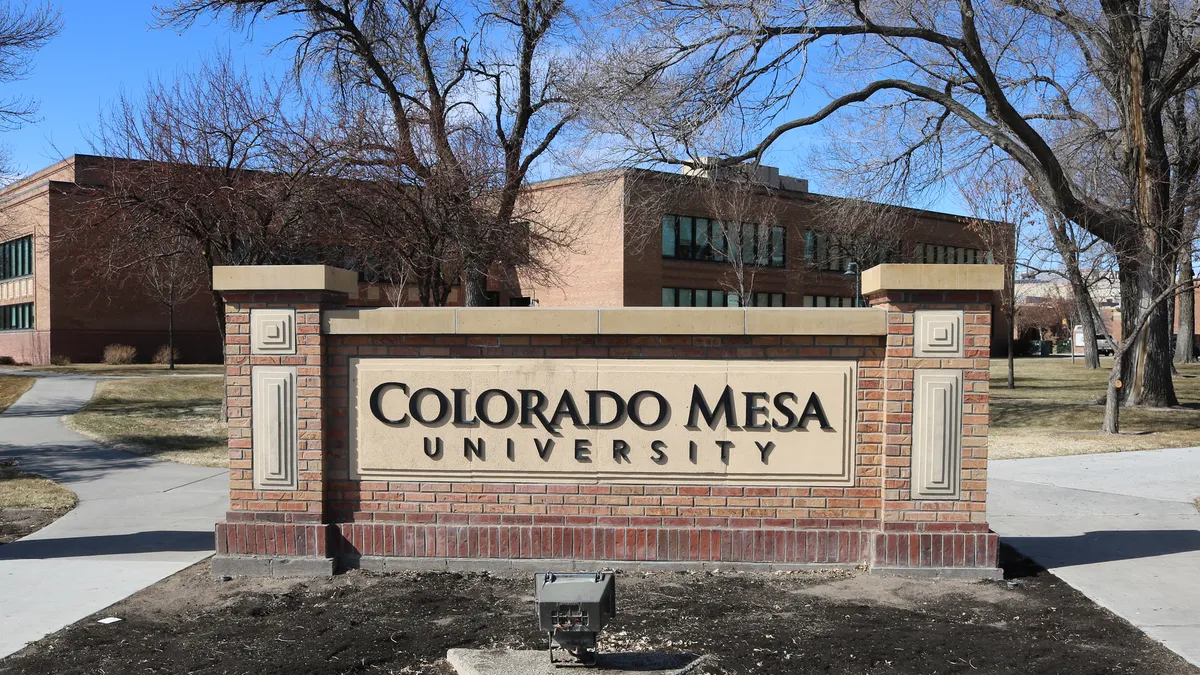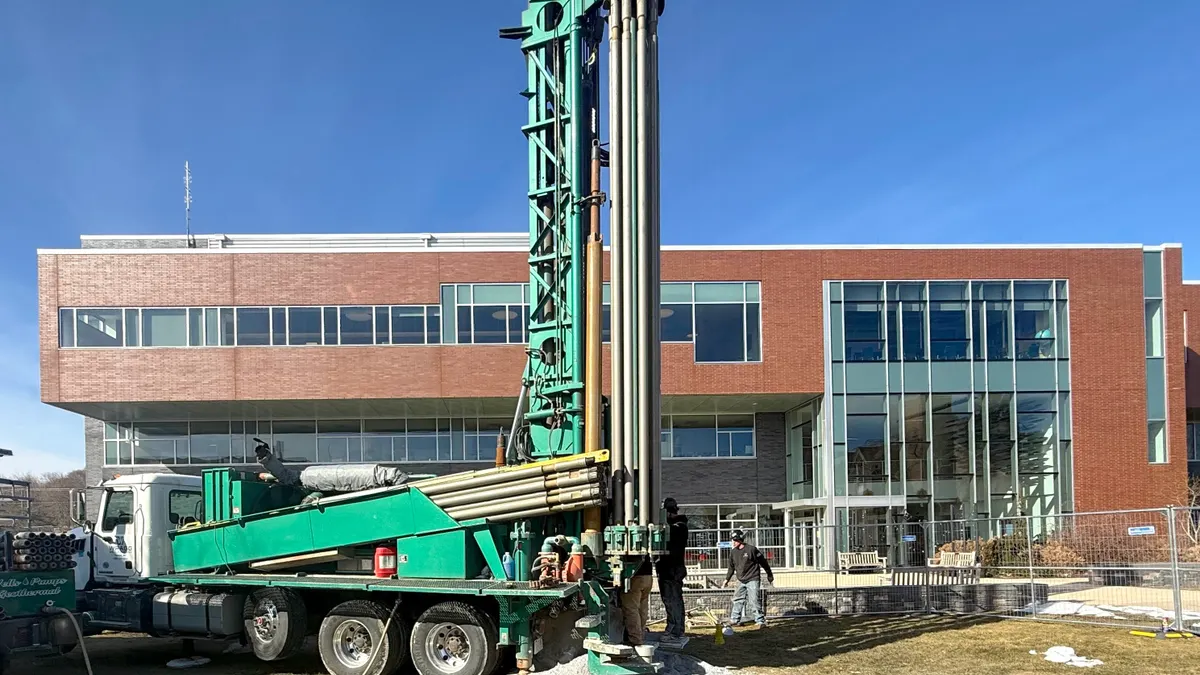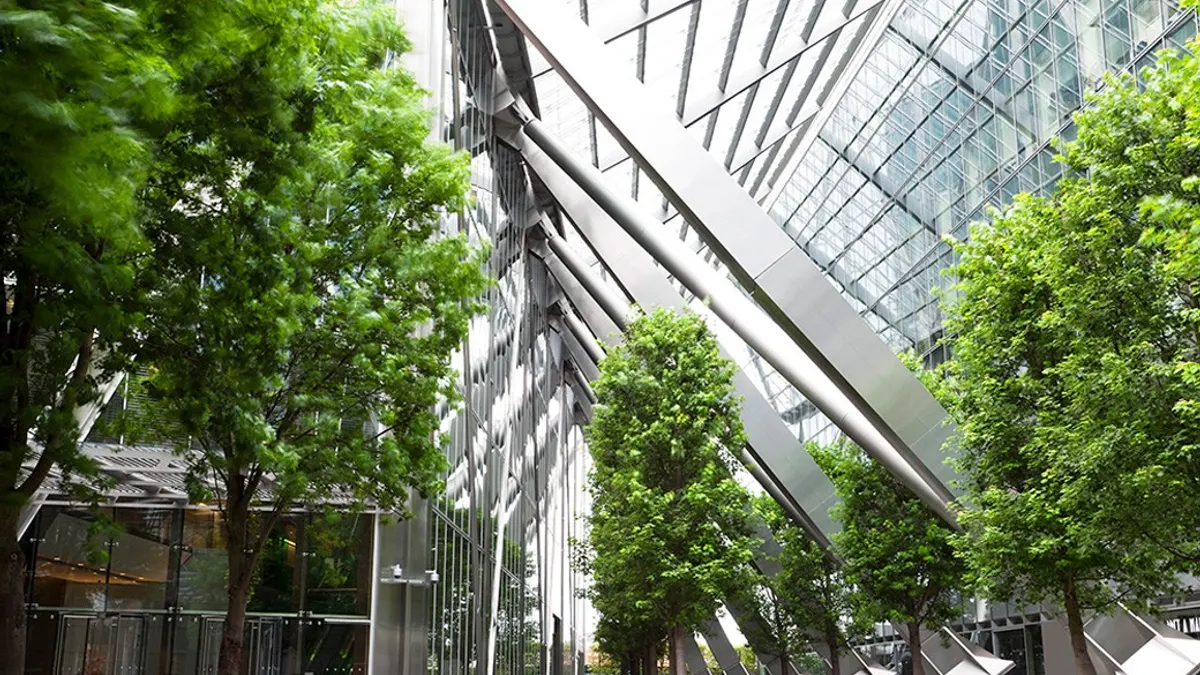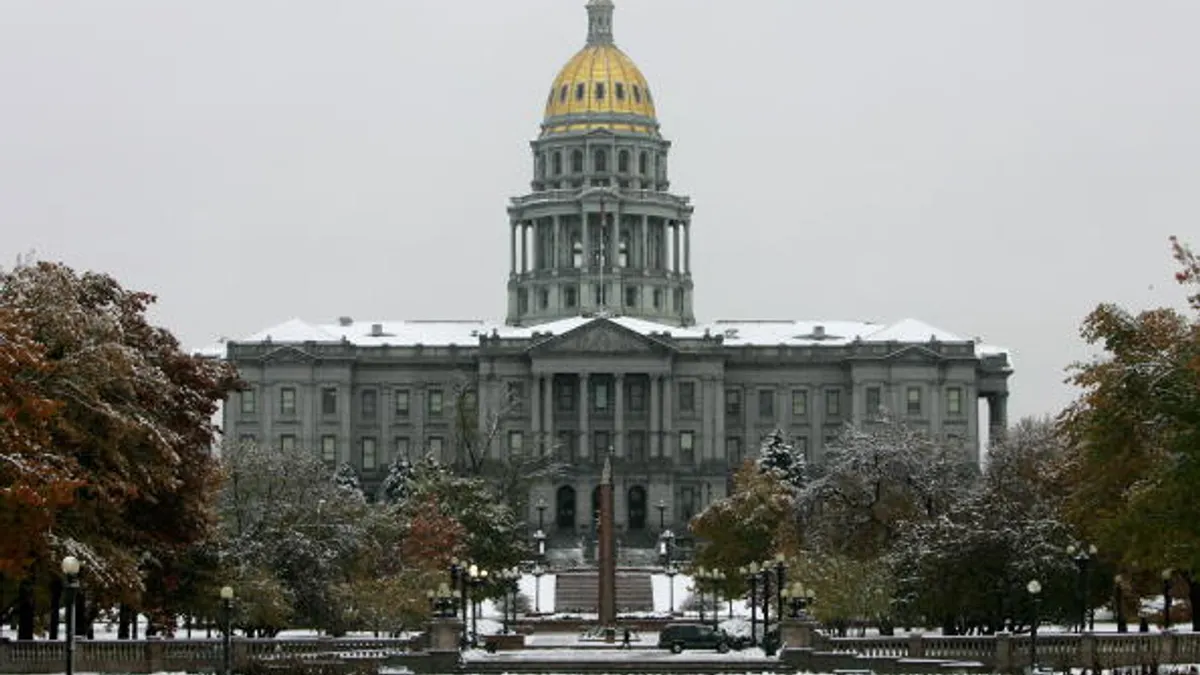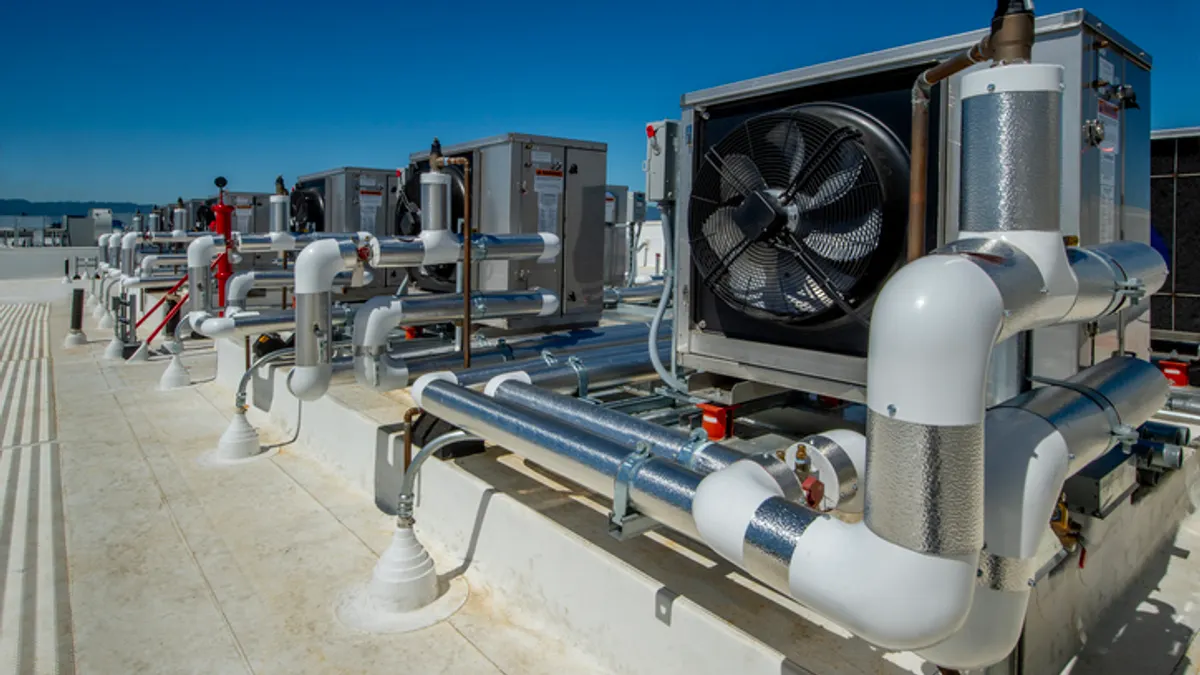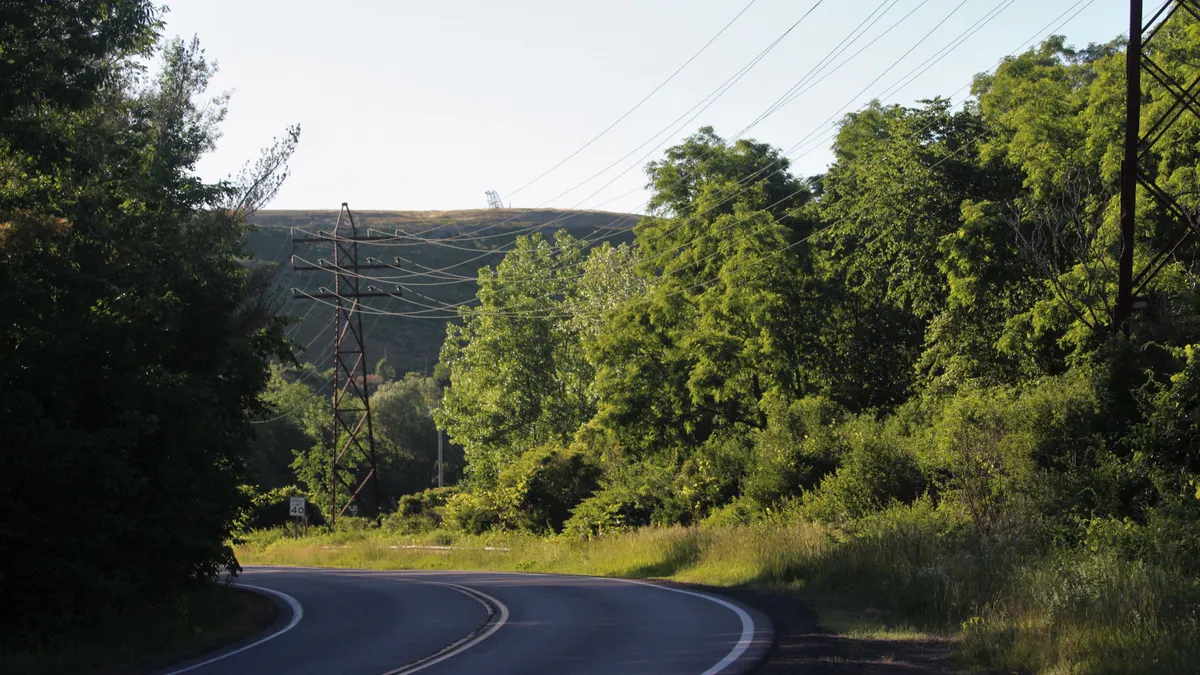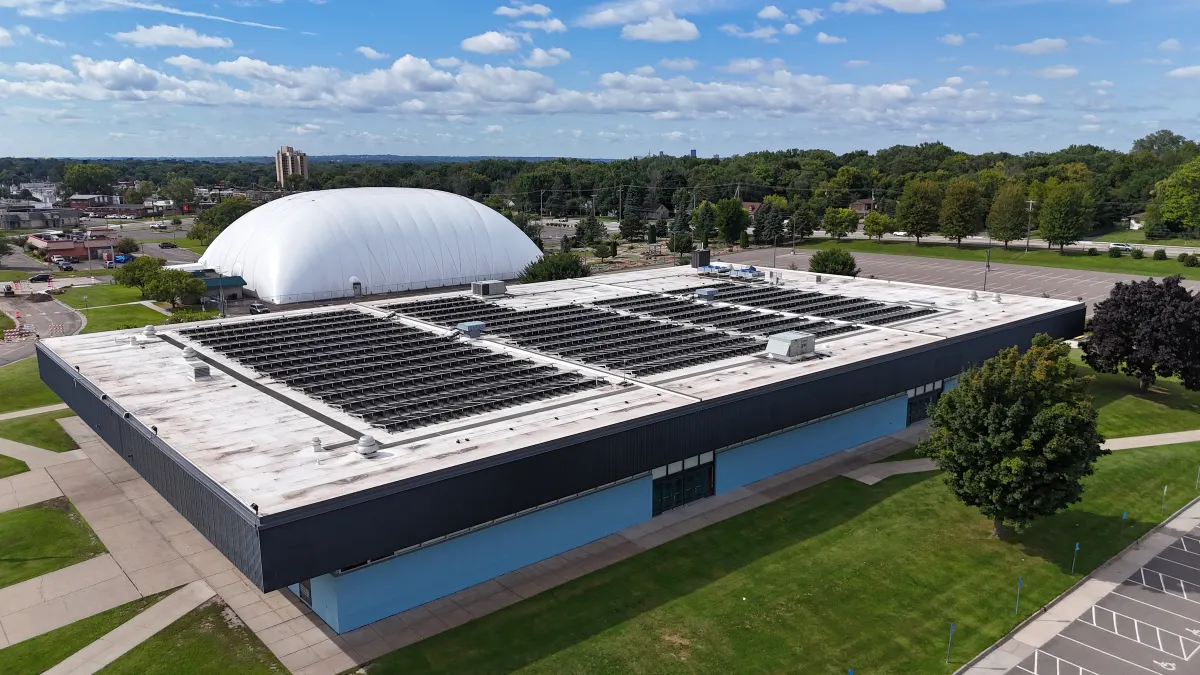As universities seek ways to improve efficiency and reduce carbon emissions to align with sustainability goals, many are looking underground to test and adopt geothermal heat pump systems for improved campus heating and cooling. Here’s a look at some of the projects taking place at universities and colleges across the U.S.
The University of Colorado Boulder and Colorado Mesa University
Colorado’s flagship university in Boulder, Colorado was awarded two grants totaling nearly $700,000, through a statewide Geothermal Energy Grant Program, to determine the feasibility of geothermal energy for the campus.
The grant will be channeled toward two studies intended to advance CU Boulder’s climate action goals, which set a 50% emissions reduction goal by 2030 with a clear path to meeting a zero emissions target no later than 2050, according to a news release in May. Both studies are expected to begin this summer, per the release. They will also include work with the Colorado Energy Office, RMH, Eavor Technologies, the U.S. National Renewable Energy Laboratory, Major Geothermal and the Boulder community, according to Chris Ewing, vice chancellor for infrastructure and sustainability at the University of Colorado Boulder.
If successful, CU-Boulder would create a geo-exchange system on campus to extract heating and cooling from existing ambient ground temperatures. Based on the results of one of the studies, which involves exploring the availability and feasibility of using deep geothermal resources to generate heat and power, the university may also add cogeneration plants on campus that generate energy from these geothermal resources, per the release.
Both studies are part of $7.7 million in grants across the state that aim to advance geothermal technology in Colorado.
Colorado Mesa University is also taking advantage of the funding opportunity. CMU announced in early June that it is expanding its existing geo-exchange system.
Upgrades to CMU’s system, which already connects 16 buildings, or approximately 70% of its campus, will expand geothermal energy to the university’s Fine Arts building and initiate design work to later integrate a residence hall. This expansion project and additional construction phases, slated to occur over the next few years, aim to eventually connect 100% of the campus to the system, according to a separate news release from the university.
University of Vermont
The eco-conscious university in Burlington, Vermont, released its Comprehensive Sustainability Plan last year, setting a course to reach climate neutrality by 2030. Fast forward to this April, and the institution has set a plan to implement renewable energy-fueled heating and cooling on campus, drilling a 510-foot-deep geothermal test well on its Athletic Campus.
The university said that using money from the Sustainable Campus Fund, pulled from a self-imposed fee of $10 per semester for all students that generates about $230,000 annually, it now plans to drill a second test site on its Trinity Campus.
“We are working hard to increase renewable energy for our campus buildings and dramatically reduce natural gas use,” Elizabeth Palchak, director of sustainability at UVM, wrote in a blog post. “One of the most promising technologies is geothermal.”
According to the university, the existing well will undergo a series of tests to determine the temperature, permeability and other characteristics of the campus’ underlying bedrock. Consulting firm Haley & Aldrich will then conduct an analysis of the test wells to inform UVM’s decisions, moving forward.
“This project offers a lot of promise to our decarbonization efforts but also offers opportunities to involve students and faculty with our staff in exploring this innovative approach to renewable energy generation,” Palchak said.
American University
American University also announced that construction is underway to implement the campus’ first geothermal well-field system, which involves drilling 85 vertical wells, each expected to be about 500 feet deep.
The renewable resource is part of a design strategy to make the Alan and Amy Meltzer Center for Athletic Performance the university’s first net-zero energy and LEED Platinum-certified building, per a news release in early May.
The geothermal wells are expected to last for 50 to 100 years beneath the landscaping, with the system being periodically tested from inside the building to ensure it is operating efficiently and that no further digging is required after the initial installation, the university said.
Meters will capture water temperatures entering the building from a closed-loop system to monitor the system as well, American University said. Additionally, a reflective surface on the facilities’ light-colored roof will reflect sunlight and reduce heat gain to improve the building’s efficiency.
University of Notre Dame
A plan to implement geothermal power is also underway at the University of Notre Dame, where a project that began in 2017 is expanding to include a new geothermal plant north of the university’s Joyce Center.
The installation is part of the third phase of the university’s comprehensive sustainability strategy. This project involves installing roughly 650 wells and 1,350 tons of capacity as part of a system that will connect to a new remote chiller plant, the university said. The first phase of the project installed 153 wells that provide 150 tons of capacity, with the second phase consisting of about 500 wells and 1,000 tons of capacity.
The third installation will allow more building temperatures to be efficiently regulated, and further interconnect the network of geo-fields with the hopes of “eventually hosting one central system on campus,” the university said in May 2023.
All three systems provide the capacity to reduce Notre Dame’s carbon dioxide emissions by 11,803 tons, representing an 8% reduction from fiscal year 2016 levels, according to the university. In addition to these planned phases, several areas of the campus remain under review for potential geothermal fields, with a total capacity of all proposed systems equaling 7,000 tons, or about one half of Notre Dame’s peak demand during the cooling season, the university said at the start of the project.
“Connecting our geothermal fields to both localized and centralized systems allows the University to maximize its energy efficiency,” Paul Kempf, assistant vice president of utilities and maintenance at the University of Notre Dame, said when the geothermal project began in 2017. “If more chilled water is produced than the local building needs, the excess can be put into the central system for use elsewhere on campus.”


